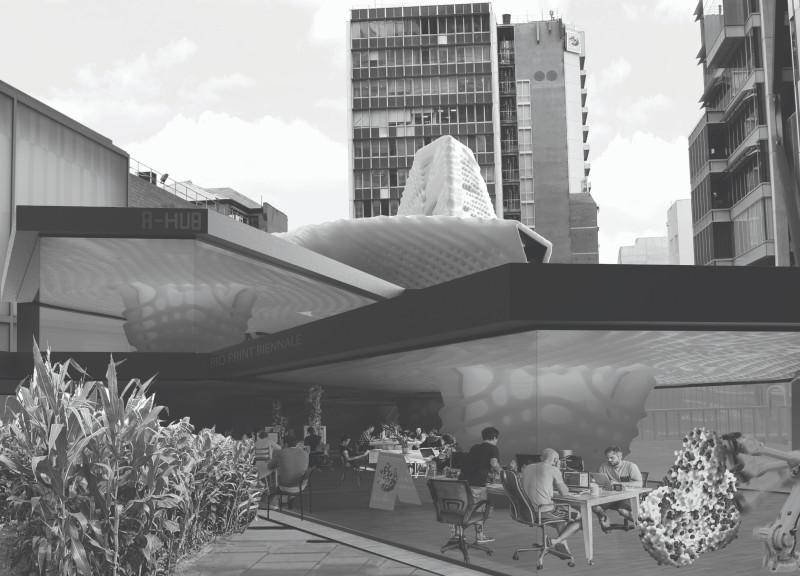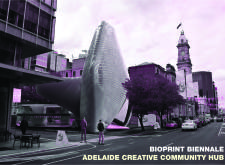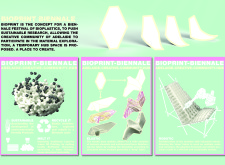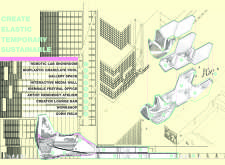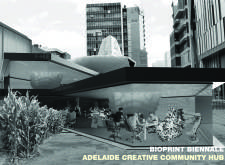5 key facts about this project
## Overview
Located in the creative landscape of Adelaide, Australia, the Bioprint Biennale serves as a platform for exploring bioplastics and sustainable design practices. The initiative promotes collaboration among artists, designers, and researchers, encouraging active engagement with eco-friendly materials. The project is conceptualized as a temporary yet adaptable space dedicated to workshops, exhibitions, and innovative practices within the sustainable arts community.
### Spatial Strategy
The design features a versatile layout tailored to accommodate various functions such as bioplastic manufacturing, exhibitions, and interactive workshops. It includes distinct areas such as a Robotic Lab Showroom for bioprinting technology, a Bioplastic Granulate Pool for artists' experimentation, and a dedicated Gallery Space for community engagement. The modular configuration allows the space to evolve based on the needs of its users while facilitating an interactive environment.
### Material Utilization and Environmental Considerations
Central to the project is the use of bioplastics, which present an ecological alternative to traditional materials. These renewable resources are designed to be biodegradable, contributing to reduced environmental impact. The core structure incorporates reinforced granulites, providing a lightweight yet robust integrity. Additional elements, such as glass and steel, enhance durability, contrasting with the organic forms created by bioplastics. Furthermore, the integration of agricultural features, including an adjacent cornfield, underscores the project’s commitment to sustainable practices and education.
Collectively, these elements create a dynamic architectural expression that aligns with the core mission of promoting sustainability and fostering community engagement through innovative design.


